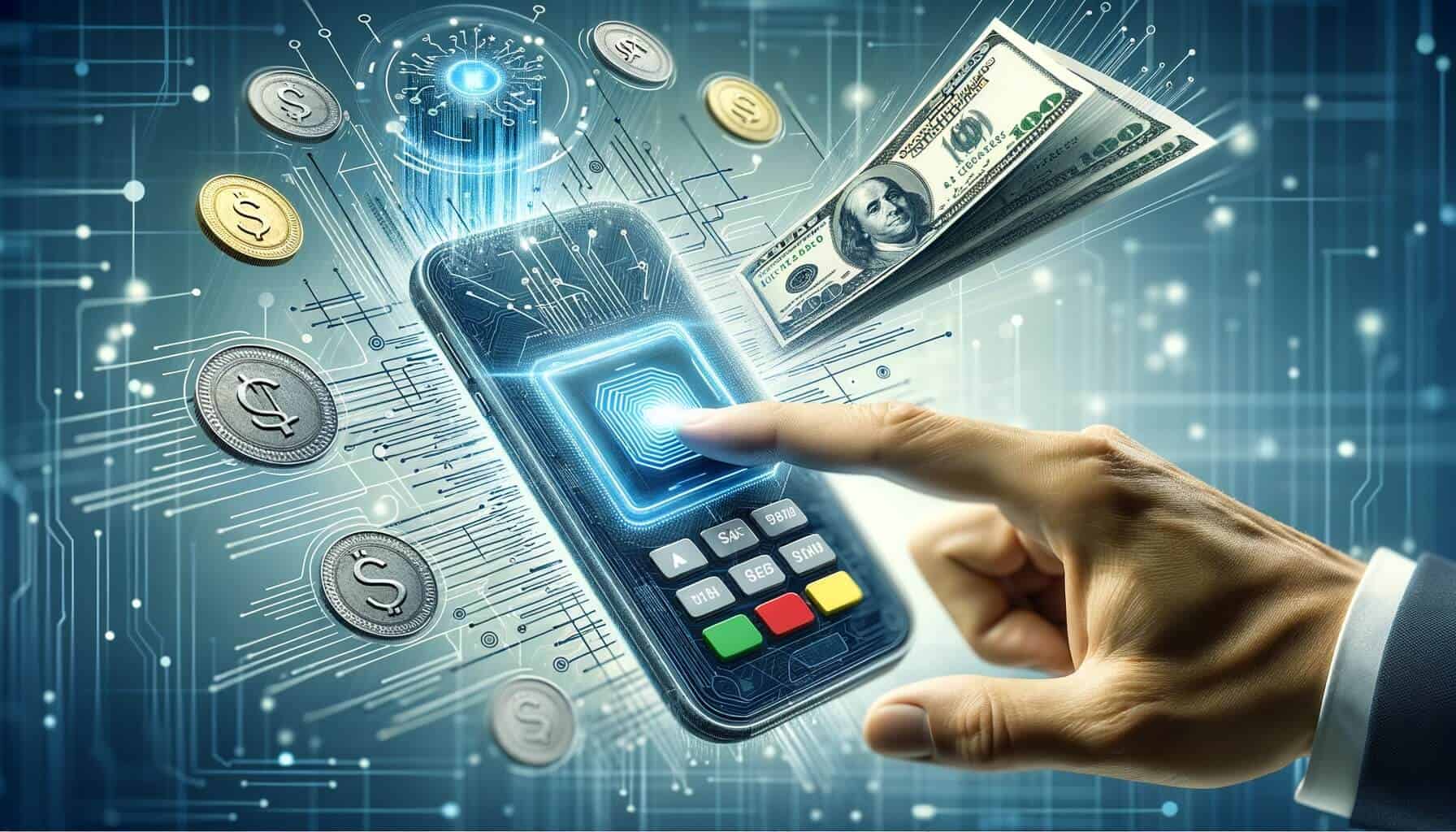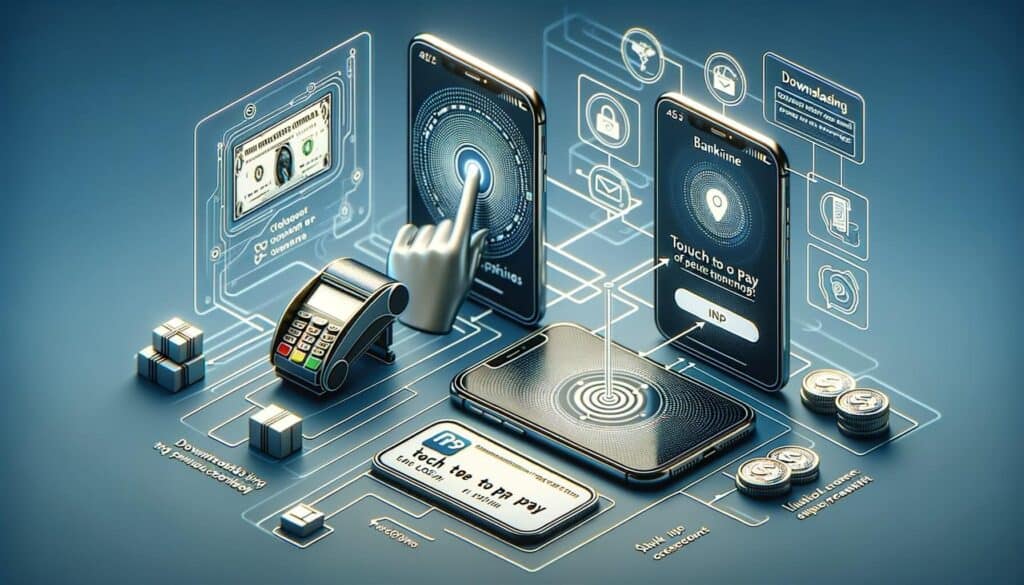
By Crystal Hopkins January 9, 2025
In today’s fast-paced world, convenience is key. With the advent of touch to pay technology, making payments has become easier and more efficient than ever before. Touch to pay, also known as contactless payment, allows users to make transactions simply by tapping their devices or cards on a payment terminal. This technology has gained immense popularity in recent years, revolutionizing the way we make purchases both online and in-store.
How Does Touch to Pay Technology Work?
Touch to pay technology utilizes near field communication (NFC) technology to enable seamless transactions. NFC is a short-range wireless communication technology that allows devices to exchange data when they are in close proximity. When a user taps their device or card on a payment terminal, the NFC chip in the device or card communicates with the terminal, transmitting the necessary payment information securely.
To set up touch to pay on a device, users need to add their payment card details to a digital wallet app, such as Apple Pay, Google Pay, or Samsung Pay. These apps securely store the card information and generate a unique token for each transaction, ensuring that the actual card details are never shared with the merchant. When making a payment, the device generates the token and sends it to the payment terminal via NFC, completing the transaction in a matter of seconds.
Benefits of Touch to Pay

Touch to pay technology offers numerous benefits to both consumers and merchants. Firstly, it provides a faster and more convenient way to make payments. With just a simple tap, users can complete transactions in seconds, eliminating the need to fumble for cash or enter card details manually. This saves time and reduces checkout queues, enhancing the overall shopping experience.
Additionally, touch to pay technology is highly secure. The use of NFC technology ensures that payment information is transmitted securely between the device and the payment terminal. Furthermore, the tokenization process adds an extra layer of security by replacing sensitive card details with unique tokens for each transaction. This significantly reduces the risk of fraud and unauthorized access to card information.
Another advantage of touch to pay technology is its versatility. It can be used for both online and in-store purchases, making it a convenient payment method for various scenarios. Whether it’s buying groceries at a local supermarket or making an online purchase, touch to pay offers a seamless and consistent payment experience.
Security Measures in Touch to Pay Systems

Security is a top priority in touch to pay technology, and various measures are in place to protect users’ payment information. As mentioned earlier, the use of NFC technology ensures secure communication between the device and the payment terminal. The NFC chip in the device or card encrypts the payment data, making it difficult for hackers to intercept and decipher.
Furthermore, the tokenization process adds an extra layer of security. Instead of transmitting actual card details, the device generates a unique token for each transaction. This token is then sent to the payment terminal, where it is decrypted and verified by the payment network. Even if a hacker manages to intercept the token, it is useless for any other transaction, as it is only valid for a single purchase.
To further enhance security, touch to pay systems often require additional authentication methods. For example, users may need to authenticate themselves using biometric data, such as a fingerprint or facial recognition, before a payment can be authorized. This ensures that only the authorized user can make payments using their device or card.
Popular Touch to Pay Services and Providers

Several touch to pay technology services and providers have emerged in recent years, offering users a wide range of options to choose from. One of the most popular touch to pay services is Apple Pay, which is available on Apple devices such as iPhones, iPads, and Apple Watches. Apple Pay supports a wide range of payment cards and can be used at millions of locations worldwide.
Google Pay is another widely used touch to pay service, available on Android devices. It offers similar functionality to Apple Pay and supports a variety of payment cards. Google Pay can be used at numerous online and in-store merchants, making it a convenient option for Android users.
Samsung Pay is a touch to pay technology service specifically designed for Samsung devices. It utilizes both NFC and magnetic secure transmission (MST) technology, allowing users to make payments at terminals that do not support NFC. Samsung Pay supports a wide range of payment cards and is compatible with a large number of merchants.
Setting Up Touch to Pay Technology on Your Device

Setting up touch to pay technology on a device is a straightforward process. Users need to download a digital wallet app, such as Apple Pay, Google Pay, or Samsung Pay, from their device’s app store. Once the app is installed, users can add their payment card details by either manually entering the card information or scanning the card using the device’s camera.
After the card details are added, the app verifies the card with the issuing bank to ensure its validity. Once the card is verified, a unique token is generated for each transaction, ensuring the security of the payment information. Users can then choose their default payment card and set up additional security measures, such as biometric authentication, to enhance the security of their touch to pay transactions.
Using Touch to Pay for Online and In-store Purchases
Touch to pay technology can be used for both online and in-store purchases, providing a seamless payment experience across different platforms. For online purchases, users can simply select the touch to pay option at the checkout page and authenticate themselves using their device’s biometric data. The payment is then authorized, and the transaction is completed without the need to enter card details manually.
In-store purchases with touch to pay technology are equally convenient. Users can tap their device or card on the payment terminal, and the transaction is completed within seconds. The payment terminal verifies the token generated by the device and processes the payment accordingly. Some touch to pay services, such as Samsung Pay, also support MST technology, allowing users to make payments at terminals that do not support NFC.
Future Trends and Innovations in Touch to Pay
Touch to pay technology is constantly evolving, and several future trends and innovations are expected to shape its development. One such trend is the integration of touch to pay technology with wearable devices. As smartwatches and fitness trackers gain popularity, incorporating touch to pay functionality into these devices allows users to make payments conveniently without the need for a smartphone or card.
Another emerging trend is the use of voice-activated touch to pay. With the rise of virtual assistants such as Siri, Google Assistant, and Alexa, users can make payments using voice commands. This hands-free approach to touch to pay technology offers a new level of convenience and accessibility.
Furthermore, the adoption of touch to pay technology is expected to increase in emerging markets. As smartphone penetration and internet connectivity improve in these regions, more users will have access to touch to pay services, driving the growth of digital payments.
Common Concerns and FAQs about Touch to Pay Technology
While touch to pay technology offers numerous benefits, it is natural for users to have concerns and questions about its usage. Here are some common concerns and frequently asked questions about touch to pay:
Q1. Is touch to pay secure?
Yes, touch to pay is highly secure. The use of NFC technology ensures secure communication between the device and the payment terminal, while tokenization adds an extra layer of security by replacing sensitive card details with unique tokens for each transaction.
Q2. What happens if my device is lost or stolen?
If your device is lost or stolen, you can remotely disable touch to pay functionality by using the Find My Device feature or contacting your service provider. Additionally, touch to pay services often require additional authentication, such as biometric data, before a payment can be authorized, reducing the risk of unauthorized use.
Q3. Can touch to pay be used internationally?
Yes, touch to pay can be used internationally, provided that the payment terminal supports the touch to pay service you are using. Many touch to pay services, such as Apple Pay and Google Pay, are accepted at millions of locations worldwide.
Q4. Can I use touch to pay with multiple payment cards?
Yes, most touch to pay services allow users to add multiple payment cards to their digital wallet. Users can choose their default payment card and select a different card for each transaction if desired.
Q5. Are there any transaction limits for touch to pay?
Transaction limits may vary depending on the touch to pay service and the merchant. Some services may have a maximum transaction limit, beyond which additional authentication, such as a PIN, may be required.
Conclusion
Touch to pay technology has revolutionized the way we make payments, offering a faster, more convenient, and secure alternative to traditional payment methods. With the use of NFC technology and tokenization, touch to pay ensures secure communication and protects users’ payment information. Popular touch to pay services such as Apple Pay, Google Pay, and Samsung Pay have gained widespread acceptance, allowing users to make seamless transactions both online and in-store.
Setting up touch to pay on a device is a simple process, and users can add multiple payment cards to their digital wallet for added convenience. Touch to pay can be used for a wide range of purchases, from groceries at a local supermarket to online shopping. Concerns about security and usage are addressed through additional authentication methods and remote disabling of touch to pay functionality in case of loss or theft.
Looking ahead, touch to pay is expected to continue evolving, with trends such as integration with wearable devices and voice-activated payments on the horizon. As touch to pay becomes more accessible and widely accepted, it is set to become the preferred payment method for consumers worldwide.